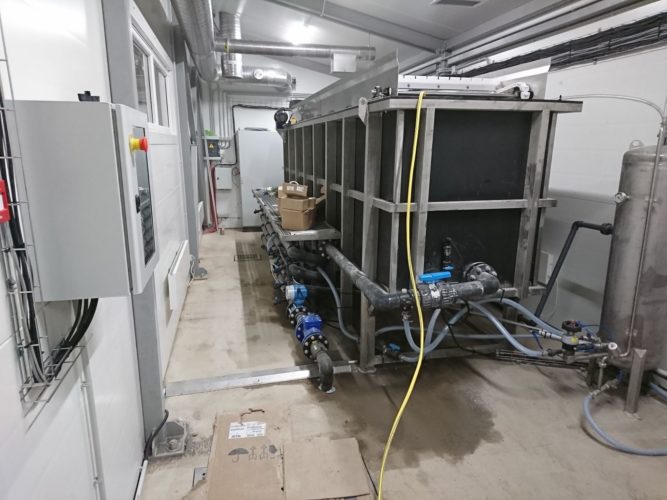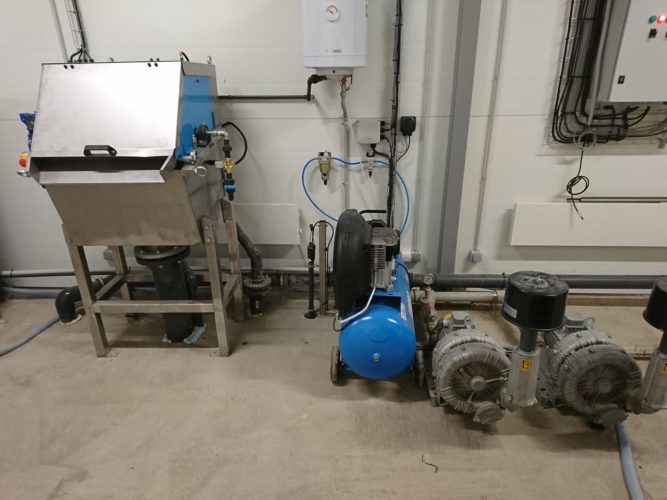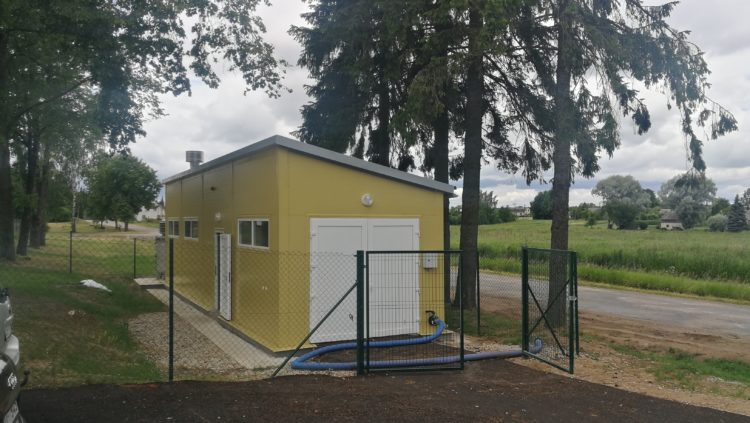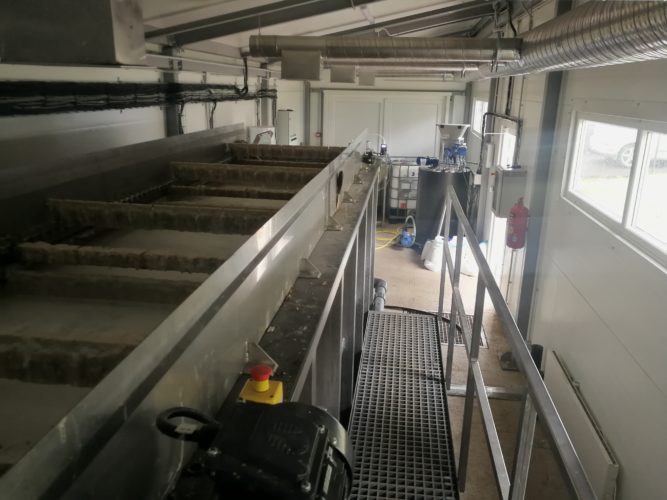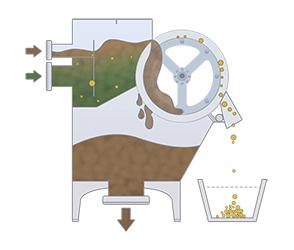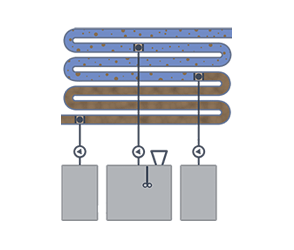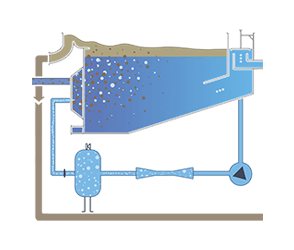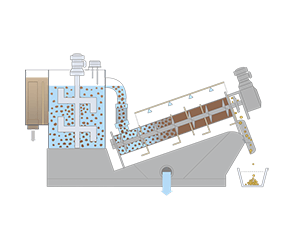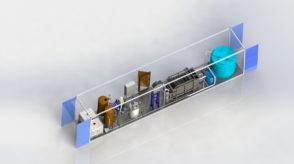Wastewater from vehicle and equipment washing contains soil, sand and grit whereas wastewater from milk processing contains organic solids and rubbish (for example, scattered fragments of packaging materials). Treated wastewater must be drained into the municipal sewage system or discharged into receiving waters (river, lake or sea) without any surcharges and in compliance with ecological sustainability requirements.
In case of dairy production, decentralized water treatment is the most economically justified solution because it allows to have full control over the entire process of wastewater treatment in order to make wastewater dischargeable into municipal sewers or receiving waters.
The wastewater treatment system can be delivered as a pre-assembled containerized plant or it can be assembled and installed in the factory premises.
FlotLife supplies dairy production plants with equipment and technology for full wastewater treatment process flow and customizes it to specific requirements of the customer. The system is fully automated for remote monitoring and control via a desktop computer or a mobile device.
Although specifics may vary depending on many factors (e.g. water characteristics, production type, factory size etc.), the general process flow for dairy production wastewater treatment is following:
- Wastewater from dairy production contains a very wide buffet of solid waste that are removed by a rotary screen filter drum.
- Pre-treated wastewater is collected in a balance tank for intermediate storage to equalize its flow and freight.
- The balanced flow is forwarded through a flocculation pipe where it is chemically conditioned (coagulated, flocculated and/or neutralized) and then pumped to dissolved air flotation (DAF) facility.
- DAF further clarifies wastewater by the removal of suspended matter through atmospheric pressure. After DAF, the treated effluent can be drained into municipal sewing system.
- The DAF effluent still contains COD and BOD freight which must pass biological treatment before being released to environment. Biologically treated effluent is of outstanding quality and can be directly discharged into receiving waters (river, lake, sea) or recycled as process water.
- Activated waste sludge from all stages where it is formed is collected, blended and fed to the sludge dewatering press where the excess liquid is separated from the thickened waste. The dewatered sludge can be used for biogas production.
"Jaunpils Dairy" is mid-sized dairy product manufacturer in Latvia. It produces different sorts of cheese, cream, desserts and puddings. The products are exported to many countries around the world including the USA, UK, Spain, Germany, Sweden and many others. For the wastewater treatment system, "Jaunpils Dairy" is running a containerized wastewater treatment plant supplied by FlotLife.
- Type of wastewaterProduction facility
- DischargeMunicipal sewage
- Flow400m3/day; 20m3/h
| Inlet, mg/l | Outlet, mg/l | |
| TSS | 300–1500 | 50 |
| F.O.G. | 500–1250 | 90 |
| COD | 6400 | 90 |
| BOD | 4200 | 85 |
